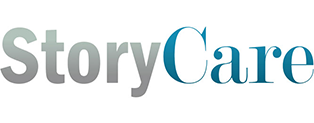125
Instructor’s Guide – These Things Happen
Overview:
This story is about how human error is common during ‘workload spikes’ due to monitoring failures, multitasking, distractions, deviations, or interruptions. Cross monitoring and team ‘backup behaviors’ are essential safety practices for managing such workload threats.

Primary Learning Outcomes
After completing this lesson, the student will be able to:
- Describe safe practices and processes related to accurate lab specimen labeling.
- Identify and explain potential risks associated with mislabeled lab specimens including high workload periods.
- Describe team-based strategies and systems to ensure accurate labeling of lab specimens.

QSEN Pre-Licensure Competencies
The following QSEN competencies are addressed in this lesson:
- Evidence-Based Practice (EBP): Integrate best current evidence with clinical expertise and patient/family preferences and values for delivery of optimal health care.
- Safety: Minimizes risk of harm to patients and providers through both system effectiveness and individual performance.
- Teamwork and Collaboration: Function effectively within nursing and inter-professional teams, fostering open communication, mutual respect, and shared decision-making to achieve quality patient care.

QSEN Teamwork & Collaboration Enrichment
TeamSTEPPS® Best Practice: Check-Backs
Team Strategies to Enhance Performance and Patient Safety (TeamSTEPPS) is an evidence-based set of teamwork tools, aimed at optimizing patient outcomes by improving communication and teamwork skills among health care professionals.
- A check-back is a closed-loop communication strategy used to verify and validate information exchanged. The strategy involves the sender initiating a message, the receiver accepting the message and confirming what was communicated, and the sender verifying that the message was received. Typically, information is called out anticipating a response on any order which must be checked.
Reflection Questions:
Students will answer reflection questions upon completing the story. These questions are aligned with the QSEN competencies and are designed to help the student reflect on both the content of the story and the QSEN competencies addressed by the story.
*Following each question are some potential answers
- Describe safe practices and processes related to accurate lab specimen labeling that you have previously encountered.
A: It is imperative that accurate lab specimen labeling occurs every time a lab is drawn. This is why it is important to have the labels ready when someone draws the labs.
- What safety errors occurred in this story? Describe each and their causes.
A: Here are a few errors that occurred during this story: Check-Backs, Cross Monitoring, and SBAR.
A: Safety errors occurred in this story because the nurse was cutting corners when she felt overwhelmed by the number of patients she was taking care of.
- How could the use of check-backs helped to avert the errors in this story?
A: Check-backs are used to prevent error because they are a closed-loop communication system. At no time was closed-loop communication used in this story.
Discussion Questions:
Use discussion questions for face to face or online discussion boards to get students to further reflect on the content of the story together.
*Following each question are some potential answers
- What can we learn from this story?
A: By slowing down and using appropriate safety measures patient care and safety will not be jeopardized.
- What is one thing you could do to improve the accuracy of labeling, especially during high workload periods?
A: One way is to keep the labs in your hand until they are labeled. Another way is to print the labels ahead of time and have them ready to apply to the specimens once they are collected.
Suggested Classroom Mastery Activities:
These activities can be tailored for individuals or groups in a face to face or online setting.
- Make a poster to help remind your colleagues of safe procedures for accurately labeling lab specimens, and the consequences for not doing so.
- Make a checklist for submitting lab specimens that helps to remind medical professionals to walk through all safety procedures before administering treatments.
- Write a short dialogue of a check-back that could have been used in this story.

Measuring Student Mastery:
| Learning Outcome |
Level 1 |
Level 2 |
Level 3 |
| Describe safe practices and processes related to accurate lab specimen labeling. |
Student struggles to describe safe practices and processes related to accurate lab specimen labeling. |
Student can describe some safe practices and processes related to accurate lab specimen labeling, but needs more practice. |
Student can accurately describe safe practices and processes related to accurate lab specimen labeling. |
| Identify and explain potential risks associated with mislabeled lab specimens including high workload periods. |
Student struggles to identify and explain potential risks associated with mislabeled lab specimens including high workload periods. |
Student can identify and explain some potential risks associated with mislabeled lab specimens including high workload periods. |
Student can accurately identify and explain potential risks associated with mislabeled lab specimens including high workload periods. |
| Describe team-based strategies and systems to ensure accurate labeling of lab specimens. |
Student struggles to describe team-based strategies and systems to ensure accurate labeling of lab specimens. |
Student can describe some team-based strategies and systems to ensure accurate labeling of lab specimens, but needs more practice with the skill. |
Student can accurately describe team-based strategies and systems to ensure accurate labeling of lab specimens. |
For additional information on improving team communication, please consult the following articles and resources in Further Reading:

Story-Specific Best Practices and Proven Tools:
In addition to the ideas generated by students and mentioned in the activities, there are established best practices that may be appropriate to introduce or reference during this lesson to support communication. Some best practices to consider for improving team communication include:
- Check-Backs
- Cross Monitoring
- SBAR
- Call-Out
- Handoff






